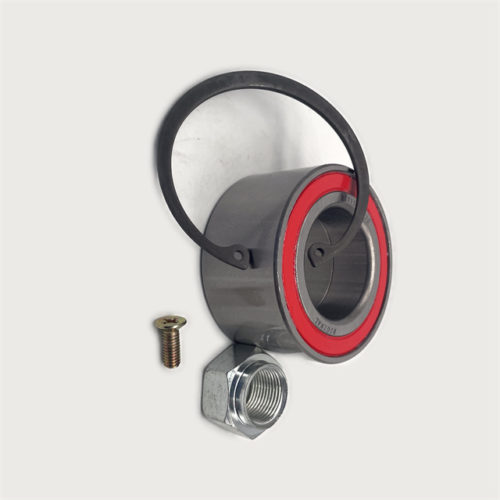Measuring the amount of lubricant that is displaced when the bearing is filled is a method to determine the appropriate amount of lubricant for the bearing.
Here are some steps you can follow to measure the amount of lubricant that is displaced:
Clean the bearing: Before measuring the amount of lubricant, make sure the bearing is clean and free of debris. This will help ensure an accurate measurement.
Fill the bearing: Fill the bearing with the appropriate amount of lubricant according to the manufacturer’s recommendations.
Wipe the bearing: Wipe any excess lubricant from the outside of the bearing and surrounding area.
Measure the displaced lubricant: Place a container under the bearing and slowly rotate the bearing. This will cause the excess lubricant to be displaced and collected in the container. Measure the amount of lubricant that is collected in the container.
Compare the amount of displaced lubricant with the manufacturer’s recommendations: Compare the amount of displaced lubricant with the manufacturer’s recommendations for the appropriate amount of lubricant. If the amount of displaced lubricant is too much or too little, adjust the amount of lubricant accordingly and repeat the process until the appropriate amount is achieved.
By measuring the amount of lubricant that is displaced, operators can ensure that the appropriate amount of lubricant is used for the bearing, sd bearings supply which can help prevent issues such as overheating or premature wear. It’s important to consult the manufacturer’s recommendations for the appropriate amount of lubricant for the bearing.
What are some common issues that can arise if too little lubricant is used?
Insufficient lubrication can cause several issues that can affect the performance and lifespan of bearings.
Here are some common issues that can arise if too little lubricant is used:
Increased friction: Insufficient lubrication can cause increased friction between the bearing and its mating surfaces. Increased friction can cause excessive wear and tear on the bearing, leading to premature failure.
Overheating: Insufficient lubrication can cause the bearing to overheat, which can result in damage to the bearing and its surrounding components. Overheating can also cause the lubricant to break down and lose its effectiveness.
Corrosion: Insufficient lubrication can cause corrosion to occur on the bearing surfaces. Corrosion can cause pitting or rusting on the bearing surfaces, which can lead to premature wear and failure.
Vibration: Insufficient lubrication can cause vibrations in the bearing and the surrounding machinery or equipment. Vibration can cause damage to the bearing and other components, leading to premature failure.
Noise: Insufficient lubrication can cause the bearing to make noise, which can be an indication of excessive wear or damage.
By ensuring that the appropriate amount of lubricant is used for bearings, operators can help prevent these issues and extend the life of their machinery and equipment. It’s important to consult the manufacturer’s recommendations for the appropriate amount of lubricant for specific types of bearings and applications.
